Search Images
Browse Content (p. 78)

Image
Jack Lang
Jack Lang (1876-1975), premier of New South Wales, Australia, smoking his trademark pipe. Photo taken in 1930.
National Library of Australia.

Image
Hell Gate Bridge
Hell Gate Bridge, New York, designed by Gustav Lindenthal (1850-1935) and opened in March, 1917.
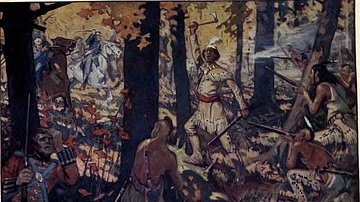
Image
Tecumseh at the Battle of the Thames
Tecumseh leads his Native American warriors into battle for the last time at the Battle of the Thames (5 October 1813). Reproduction of a watercolor by Charles William Jefferys, published in The Story of Tecumseh by N. Gurd, 1912.
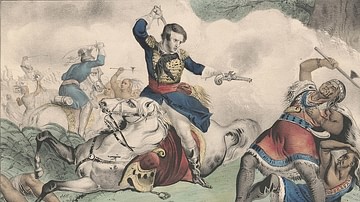
Image
Death of Tecumseh at the Battle of the Thames
Tecumseh's death at the Battle of the Thames (5 October 1813), lithograph by N. Currier, 1846.
Library of Congress, Washington, D.C.
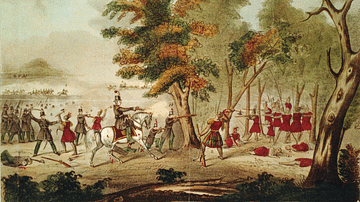
Image
Battle of the Thames
Battle of the Thames (5 October 1813), specifically showing the moment of Tecumseh's death, lithograph by William Emmons, 1833.
Library of Congress, Washington, D.C.
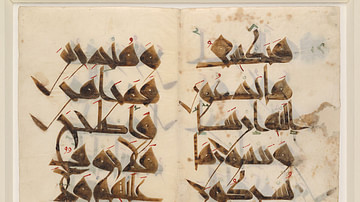
Image
Folio from Nurse's Qur'an (Mushaf al-Hadina)
Two pages from a Qur'anc commissioned by a nursemaid to a North African Zirid ruler. It was donated to the Great Mosque of Qairawan. (Metropolitan Museum of Art, New York)

Image
18th-century Mughal Miniature Quran
A miniature Qur'an in vellum binding. Mughal Empire, 18th century. (Victoria and Albert Museum, London)

Image
Folio from The Blue Qur'an
Most likely from North Africa dating from the late 9th to mid 10th-century, the celebrated Blue Qur'an was a luxurious book with pages dyed in indigo, and Kufic calligraphy in gold foil, and silver bookmarks. Consisting of over 600 large...
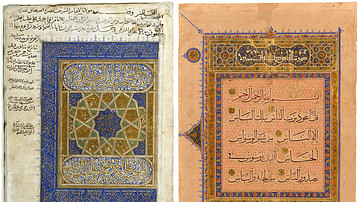
Image
Al-Wajiz Commentary Folio
An abridged commentary on the Qur’an from Mamluk Egypt, 1478.
Museum no. MSL/1869/7219, folio 2a. © Victoria and Albert Museum, London

Image
Talismanic Shirt with Qur'anic Verses
Cotton shirt made of three panels with verses from the Quran in ink and gold paint. 15th-16th-century India. (Victoria and Albert Museum, London)